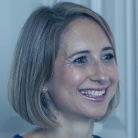
How to build a super-profitable consultancy
Whatever you want to achieve as a consulting business, you will not get very far without profit. It provides opportunities to invest in the team and the future of the business.

Peter Czapp is co-founder of The Consultancy Growth Network and also co-founder of accountancy firm The Wow Company.
He is a benchmarking expert and responsible for Consultancy BenchPress.
Peter has identified the key levers that owners of consultancies can pull to improve profitability:
- Planning – set yourself up for a profitable year
- Pricing – increase your rates and win the right type of work
- Project management – ensure every project is profitable
- Existing clients – unlock profit from your existing relationships
- Profit culture – get your whole team involved in increasing profit.
1. Planning – set yourself up for a profitable year
The first driver of profitability is making sure profit is right at the centre of your business.
Peter emphasises three strategies to achieve it:
- your role as owner is to lead your consultancy so that it can flourish without you being involved in every tiny detail, which can take your focus away from making you more profitable
- when you are creating your plans, think about the costs and gross margin first – aim for a gross margin of more than 55% (the current average for consulting firms)
- don’t forget about utilisation rates and how much time each member of staff spends working on client projects.
“The top-performing consulting firms can break down profitability by client and then by service,” explains Peter. “They don’t look at it as a whole, but rather the detail – where they make money, where they don’t, and the end goal.”
Knowing where you’re making a profit and where you are not can provide an accurate forecast for all sales and costs in the company. From there you can identify:
- how many large, medium and small projects you’re going to need to win
- where that revenue will come from – existing clients vs new clients
- how many opportunities you need to generate and at what conversion rate to get the profit you want.
“It’s the detail and the nuances that matter,” explains Peter. “Once you know that a client is not profitable, you will do something about it. Once you know a particular service is disproportionately more profitable and valuable to you, you will sell more of it.”
It is also important to focus. Trying to be everything to everyone often has the opposite of its desired effect in achieving profit, so if a consultancy can successfully differentiate itself, it will then be able to charge more and offer premium products or services.
As Peter puts it, “Try to work out and to focus on your profit sweet spot. The particular things that you do better than your competitors, those things that your clients value more than everyone else and are willing to pay highly for it.”
2. Pricing – increase your rates and win the right type of work
A 5% increase in price will deliver a 30% increase in operating profit*
Peter points out that there is a huge correlation between pricing and profitability and that a higher price equals higher profitability.
He encourages all consultancies to offer more than one pricing option when quoting for work. “We decide value by making comparisons,” he explains. “If you only offer one option, you are inviting your buyer to compare your price to your competitors. Research shows that by making more than one offer you have the opportunity to position each of your offerings to make one look more favourable.”
He recommends you read Blair Enns’ book ‘Pricing Creativity’.
Peter also encourages regular reviews of your pricing to check that you are not undervaluing yourselves and losing profit.
91% of consultancies don’t increase contract prices inline with inflation*
“If you’re hiring better people, gaining valuable experience, and improving what you do, you’ll be adding more value to your clients. Your prices should reflect this additional value that you’re now able to deliver,” he says.
Another avenue is to win larger clients with bigger budgets. The most profitable consulting firms, on average, are those that work with big deals and large companies. “One thing that will help that is your ability to specialise. The more specialist and the more niche consultancies become, the higher price they can charge and the greater profit they make,” Peter said.
Finally, Peter believes that discounting strategies do not benefit your consultancy in the long term, and I agree! Here are some alternatives to discounting.
3. Project management – ensure every project is profitable
Peter sees project management as an area where too much profit leaks. In particular, he believes in the role of detailed diagnostics in understanding what work needs to be done on a particular project and being able to produce a costed proposal off the back of it:
“There is a real danger that you undersell diagnostics and that you somehow devalue them in a rush to try and win the deal,” says Peter. “If you don’t properly scope the assignment, you miss opportunities. Crucially you could be setting yourselves up to do far more work for the same fixed price than if you’d gone through a proper diagnostics exercise.”
Also, Peter advises planning for the unexpected. More and more consultancy firms are discussing contingency budgets with their clients, so Peter suggests you budget for anything that could crop up and make it clear to the client that you will ask their permission before you use it.
He also recommends reviewing the profitability of your projects regularly. Only 33% of consultancies review the profitability of their projects once they are finished.* But even that is too late. The most profitable consultancies review their profitability whilst the project is live.
“If you’re reviewing your projects whilst they’re live, every month, or even every week, you have the opportunity to correct things if you go off-track,” says Peter. “You can work out where things are going wrong. You can then consider why you are not making money. Is it a training issue or a conversation you need to have with the client? Imagine what you could do with the data if you knew how profitable your project was before you finished it.”
4. Existing clients – unlock profit from your existing relationships
We all know that it is easier to generate revenue from existing clients, but they are often an afterthought as you chase new business. Peter’s advice is to focus on the clients that are most likely to increase rather than drain your finances and resources. “There are those clients that have greater growth potential and are more valuable, so you should spend more time with them,” he says. “Don’t let your attention get drawn to the noisiest clients who are often the most painful and not necessarily the most profitable.”
Peter also advocates taking time to reflect on your clients, their wants and needs, and their perception of your consultancy, then find ways to nurture that relationship. “Understanding the organisational chart of your client and the relationships that you have with them and their level of advocacy will help you work out how to turn reds into ambers and ambers into greens, enabling you to expand your accounts,” he says.
5. Profit culture – get your whole team involved in increasing profit
Peter emphasises that profit should not be something that is the solitary pursuit of you as the business owner. You must engage your whole team in this.
“Profit is not a dirty word. It’s the fuel that will take you on your journey,” he says. “Profit provides opportunities to invest in the team, to invest in the future of the business, and it provides for the sustainability of the business. It’s in everyone’s interest that the business makes money. The more you can help your team understand that and understand the part they can play in it, the more profitable you will be.”
“No work is for free”
Peter also strongly advocates that no work is for free, as do I. If you do work for free, you’re not valuing your time and your client won’t value the work you do for them. “Clients with the highest NPS scores are the ones that pay the most,” says Peter.
Wherever you stand regarding your profit performance, there’s bound to be room for improvement. There will be things you don’t know, mistakes you are making and things you need to do differently.
If you would like to speak to Peter about shifting your profitability, contact him via LinkedIn: https://www.linkedin.com/in/peterczapp/. You can find out more about Wow at https://www.thewowcompany.com/.
* Survey of participants of The Consultancy Growth Network event
Article | Strategy and leadershipFinancial

Written by
Ali El Moghraby
Head of Marketing
The Consultancy Growth Network


